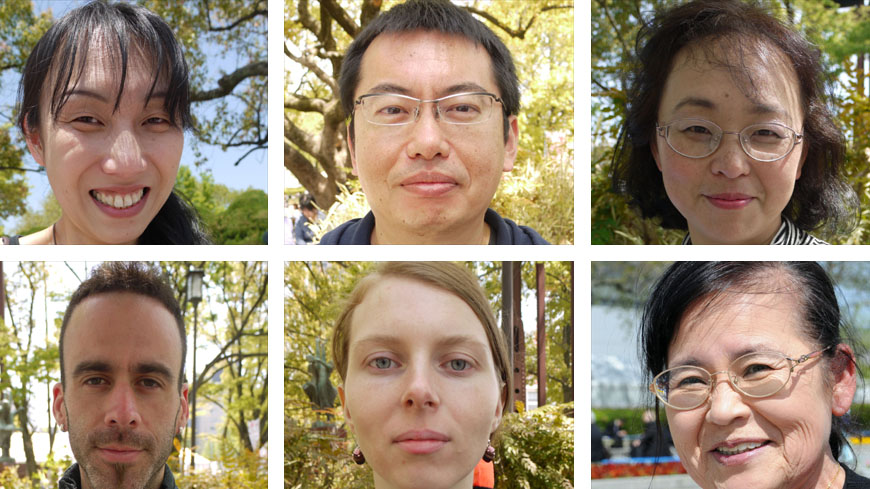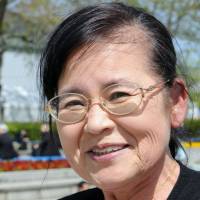Ryoko Gohara
Housewife, 39 (Japanese)
A bag of cheap sweets and snacks from Osaka, as well as candies using tangerines from Sakurajima, Kagoshima Prefecture. I buy sweets mostly to give away to my kids and their friends.
Takahiro Fujioka
Ph.D. student, 35 (Japanese)
The cream zenzai [cold sweets with whipped cream and sweet bean paste] I bought at a stall. Sweets are my stress release. I often have ice cream at home both before and after dinner.
Yuriko Inoue
Nursery teacher, 50 (Japanese)
Soft, salty senbei [rice crackers]. Sweets are always in my office for teachers to share during their breaks. It facilitates communication among workers. At home, too, sweets bring every member of the family to the same table.
Alberto Fernandez Vazquez
Patissier, 30 (Spanish)
Wagashi [Japanese sweets]. I liked imo-yō kan [jellylike sweets made from sweet potato paste and sugar]. European sweets make my stomach heavy. I like wagashi sweets because they use less oil and sugar, and because it has roots in the Japanese culture.
Sandrine Boivin
Food technologist, 29 (French)
The momiji manjū [maple leaf-shaped sponge cake from Hiroshima]. My job is to develop menus for corporations. I also like to cook sweets, like puddings and madeleines, on weekends. So sweets are my happiness, as well as my job and my hobby.
Teruko Meotoike
Housewife, 62 (Japanese)
Yatsuhashi, a Kyoto confectionery made of glutinous rice flour, sugar and cinnamon. Sweets are something you relax and enjoy with tea or coffee. When I see a box of sweets containing famous regional products, it brings back memories of traveling to that place.
Interested in gathering views in your neighborhood? E-mail [email protected]






![Sandrine Boivin, Food technologist, 29 (French): The momiji manjū [maple leaf-shaped sponge cake from Hiroshima]. My job is to develop menus for corporations. I also like to cook sweets, like puddings and madeleines, on weekends. So sweets are my happiness, as well as my job and my hobby. | SATOKO KAWASAKI](https://www.japantimes.co.jp/wp-content/uploads/2013/04/fl20130423vfe-200x200.jpg)
![Alberto Fernandez Vazquez, Patissier, 30 (Spanish): Wagashi [Japanese sweets]. I liked imo-yō kan [jellylike sweets made from sweet potato paste and sugar]. European sweets make my stomach heavy. I like wagashi sweets because they use less oil and sugar, and because it has roots in the Japanese culture. | SATOKO KAWASAKI](https://www.japantimes.co.jp/wp-content/uploads/2013/04/fl20130423vfd-200x200.jpg)
![Yuriko Inoue, Nursery teacher, 50 (Japanese): Soft, salty senbei [rice crackers]. Sweets are always in my office for teachers to share during their breaks. It facilitates communication among workers. At home, too, sweets bring every member of the family to the same table. | SATOKO KAWASAKI](https://www.japantimes.co.jp/wp-content/uploads/2013/04/fl20130423vfc-200x200.jpg)
![Takahiro Fujioka, Ph.D. student, 35 (Japanese): The cream zenzai [cold sweets with whipped cream and sweet bean paste] I bought at a stall. Sweets are my stress release. I often have ice cream at home both before and after dinner. | SATOKO KAWASAKI](https://www.japantimes.co.jp/wp-content/uploads/2013/04/fl20130423vfb-200x200.jpg)
















With your current subscription plan you can comment on stories. However, before writing your first comment, please create a display name in the Profile section of your subscriber account page.